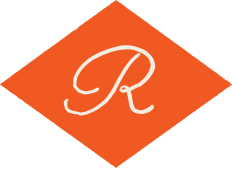It’s back… Noritsu vs Frontier!

A few years ago, Richard wrote a blog about Noritsu scans vs. Frontier scans. It’s our most popular blog entry to-date, and as the use of film continues to come back in vogue, Richard thinks it’s time for a sequel. So here it is: Noritsu vs. Frontier, Part Deux!

THE QUICK ANSWER
Let’s get straight to the question you’re dying to ask about Noritsu vs. Frontier: do they look the same? Well, comparing Noritsu and Frontier is like comparing Coke and Pepsi: they’re pretty similar, but everyone has a preference.
The minor variance you’ll see between the two scanners is based on the magenta tones—each machine interprets them differently, and these interpretations will then vary under different lighting conditions. Because of this, Richard can never say one machine produces definitively “warmer” or “greener” or “anything-er” tones. Both machines produce great images, just with the slightest of differences; the view on which one is best is, well, completely subjective (except for black and white film, but we’ll get to that later).

Check out that snazzy scanning team! Lookin' good, guys.
THE INFLUENCE OF YOUR LAB
All the above being said, what’s going to influence your scans more than the machine you choose is the communication you have with the lab doing the scanning and the skills of their staff. Scanning is an art form that takes seasoned pros (like those at Richard) to pull off a killer scan. When your lab listens to your preferences, that’s when you really get what you should out of film—shoot, scan, and get client-ready results (with little to no post-correction required).
A lab that listens to you is harder to find than you’d think. Most labs are shooting for mass consistency… not that consistency is a bad thing! Richard aims for consistency, too. But when consistency across all customers is the focus, the assumption is made that everyone wants the “average”. What you want isn’t necessarily what the next ten photogs want, though. And that’s what makes Richard different; we provide consistency for each individual by listening to what you want, we have the skills to execute it, and we have a system to make sure all your jobs get the same treatment moving forward.
Psst… if you’re working with Richard and spending more than a minute or two editing one roll of film, call the lab and tell us the color is not working for you! We’d be happy to adjust for your next job so you can spend less time editing and more time shooting. Or, get yourself a Richard Color PAC for a detailed custom color profile and support in achieving your business goals.

MORE ON THE NORITSU VS FRONTIER
So, you know that the machines have slightly different tonal qualities, and you know that voicing your preferences to your brilliant lab is vital. But what else should you consider when choosing between the Noritsu and Frontier?
What works for the goose DOESN'T necessarily work for the gander.
So you love the Frontier? You're not the first. In fact, Richard suspects that the well-known popularity of the Frontier amongst certain photogs is what steers many folks in that direction. Thing is, the top photogs are the ones that make their photos spectacular, and the scanner they choose is only a part of the equation that makes their work successful (and trust Richard, there are some superstar photogs using the Noritsu, too). We repeat, YOUR PHOTOS WILL NOT BE PRO-QUALITY JUST BECAUSE YOU USE THE SAME SCANNER AS A PRO. Same goes for your film stock and camera choices. That's why you've got to...
Test, test, test.
You'll never really know which scanner is for you until you try them out. Even then, as your style evolves and your photography techniques change, you might need to switch or use different scanners for different subject matter. So always compare the exact same frame(s) in both digital file form AND photographic print form from both scanners before you proclaim your allegiance to a certain machine.

Think about print size.
The scan quality/structure is different between the two machines (check out our close-up pics... look closer... see the difference?). So, Frontier scans cannot be rez’ed up like scans on the Noritsu; the size you scan is the size you print. Overall, Noritsu scans will always produce better large prints than the Frontier. This can be a bit of a shock, especially if you’re used to the flexible resolution that digital cameras provide.
Timing is everything.
The turn-around time for the Frontier is 2-3x that of the Noritsu (contact us for specific turn-around times, since these will fluctuate throughout the year based on our busy season). So if speed is the name of your game, give Noritsu a try!
Black and white film is the exception to the rule.
Richard talks a lot about how personal preference affects which scanner you’ll choose, but when it comes to black and white film, that concept practically disappears. Without a doubt, Noritsu is the scanner for black and white. Without adding a few extra steps in digital post, Frontier scans of black and white can appear to be muddy brown—Noritsu scans look more like a true black & white, straight off the scanner. Black & white Frontier scans also tend to have less depth/contrast, and when it comes to black & white film, contrast is where most of your control lies! Meanwhile, the Noritsu actually allows us to add contrast to a flat film negative and more easily reign in film that is too contrasty. Stick with Richard’s advice and use the Noritsu for black & white film scans.

MORE RESOURCES
To learn more about Richard’s scanning, the relationship with your lab, and the technical foundations of shooting film that affect the appearance of your photos, check out our friend Johnny Patience’s blog entry “The Secrets of Richard Photo Lab”.
Just getting started in film? Check out Jose Villa’s "Fine Art Wedding Photography". And don’t forget what you learned in high school science class; stick to the same formula (camera, lens, film stock, lab, etc.) until you know how each element behaves, and then change only one variable at a time.
Start Your Film Order
